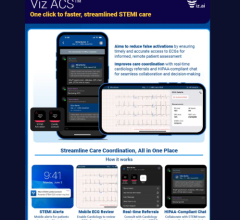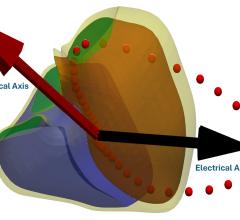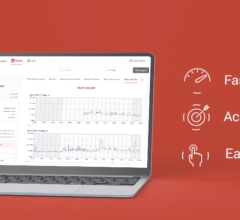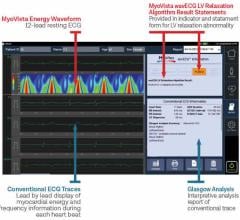
March 2, 2015 — Johns Hopkins cardiologists report they have developed a formula that estimates one’s risk of dying over a decade based on a person’s ability to exercise on a treadmill at an increasing speed and incline.
Several exercise-based risk scoring systems already in use are designed to measure short-term risk of dying but do so strictly among patients with established heart disease or overt signs of cardiovascular trouble. Such scores factor in multiple variables and incorporate results from additional tests, including electrocardiograms (ECGs).
By contrast, the new algorithm, dubbed the FIT Treadmill Score and described in the March 2 issue of the journal Mayo Clinic Proceedings, can gauge long-term death risk in anyone based solely on treadmill exercise performance. The score, the research team said, could yield valuable clues about a person’s health and should be calculated for the millions of patients who undergo cardiac stress testing in the United States each year.
“The notion that being in good physical shape portends lower death risk is by no means new, but we wanted to quantify that risk precisely by age, gender and fitness level, and do so with an elegantly simple equation that requires no additional fancy testing beyond the standard stress test,” said lead investigator Haitham Ahmed, M.D., MPH, a cardiology fellow at the Johns Hopkins University School of Medicine.
In addition to age and gender, the formula factors in peak heart rate reached during intense exercise and the ability to tolerate physical exertion as measured by so-called metabolic equivalents (METs), a gauge of how much energy the body expends during exercise. More vigorous activities require higher energy output (higher METs), better exercise tolerance and higher fitness level. An activity such as slow walking equals two METs, compared with eight for running.
“The FIT Treadmill Score is easy to calculate and costs nothing beyond the cost of the treadmill test itself,” said senior study author Michael Blaha, M.D., MPH, director of clinical research at the Johns Hopkins Ciccarone Center for the Prevention of Heart Disease. “We hope the score will become a mainstay in cardiologists and primary clinicians’ offices as a meaningful way to illustrate risk among those who undergo cardiac stress testing and propel people with poor results to become more physically active.”
Exercise stress tests — commonly used to determine who needs invasive cardiac testing and inform treatment decisions — measure how well the heart and lungs respond to physical exertion while a person is walking on a treadmill at progressively higher speed and elevation. The test is stopped once a person reaches the point of exhaustion or develops chest pain, dizziness or heart rhythm abnormalities. Those who have abnormal findings on their ECG tracings during exercise or who develop symptoms suggestive of abnormal heart strain during the test are referred for angiography. Those who have normal ECG readings and no alarming symptoms while exercising are said to have “normal” results and typically do not require further testing.
However, the researchers say, the new data show varying degrees of fitness among those with “normal” stress test results that reveal telling clues about cardiac and respiratory fitness and, therefore, overall death risk over time.
“Stress test results are currently interpreted as ‘either/or’ but we know that heart disease is a spectrum disorder,” Ahmed said. “We believe that our FIT score reflects the complex nature of cardiovascular health and can offer important insights to both clinicians and patients.”
For the study, the team analyzed information on 58,020 people, ages 18 to 96, from Detroit, Michigan, who underwent standard exercise stress tests between 1991 and 2009. The researchers then tracked how many of the participants within each fitness level died from any cause over the next decade. The results reveal that among people of the same age and gender, fitness level as measured by METs and peak heart rate reached during exercise were the greatest indicators of death risk. Fitness level was the single most powerful predictor of death and survival, even after researchers accounted for other important variables such as diabetes and family history of premature death — a finding that underscores the profound importance of heart and lung fitness, the investigators said.
Scores ranged from negative 200 to positive 200, with those above 0 having lower mortality risk and those in the negative range facing highest risk of dying. Patients who scored 100 or higher had a 2 percent risk of dying over the next 10 years, while those with scores between 0 and 100 faced a 3 percent death risk over the next decade. In other words, two of 100 people of the same age and gender with a score of 100 or higher would die over the next decade, compared with three out of 100 for those with a fitness score between 0 and 100. People with scores between negative 100 and 0 had an 11 percent risk of dying in the next 10 years, while those with scores lower than negative 100 had a 38 percent risk of dying.
Published along with the study is a chart depicting death risk by age, gender and fitness level, which can be printed on placards for use in physician’s offices to guide clinical advice.
“We hope that illustrating risk that way could become a catalyst for patients to increase exercise and improve cardiovascular fitness,” Blaha said.
For more information: www.mayoclinic.org


 October 09, 2025
October 09, 2025 









